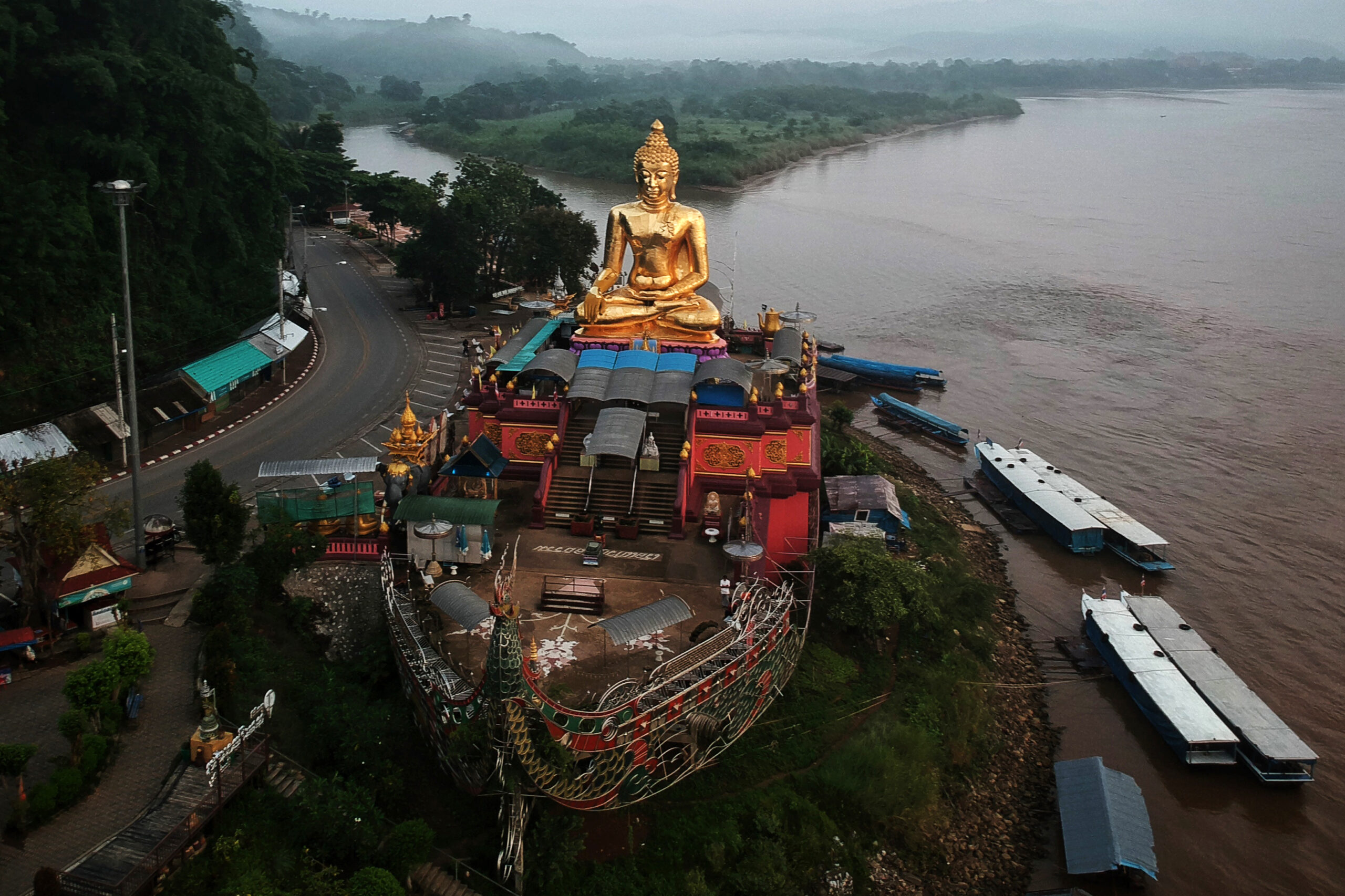T.* struggled with addiction for 16 years, living homeless on the streets of Vietnam’s capital, Hanoi. During that time, he was forced into government-run drug rehabilitation centres 14 times.
“The method that they used to help the drug addict is that they will electrocute you or beat you,” he said. “The only thing I would like to share about the government rehab centres is it actually was one of the most terrible nightmares that I have ever experienced.”
T. is one of many in the region who have faced substance abuse issues as Southeast Asia’s drug trade thrives. Last year, a record one billion methamphetamine tablets were seized in the region – more than 35 times higher than two decades prior. And in Vietnam, the number of synthetic drug users, particularly of methamphetamine, is increasing. Between 2016 and 2020 meth usage increased nine-fold.
Those caught using or holding methamphetamine are often sent to government-run rehabs against their will. Detainees can be held between two to four years.
While drugs inundate the region, there are limited options for support and treatment for those grappling with addiction. Thousands of individuals, including children as young as 12 years old, are held at Vietnam’s compulsory drug-treatment centres. Many are pushed into the centres involuntarily. Once inside, they live behind fenced walls and under close guard for as long as four years. “Labour therapy” and beatings have been reported as common forms of “treatment.” Hundreds have attempted escape.
Compulsory rehabilitation has been condemned by international rights organisations for over a decade in Vietnam. Government promises to transition towards community-based treatment appear to be stalling and little system-wide change has been implemented.
“Based on our discussions with people inside the country and tracking these issues online, forced labour practices in the name of ‘labour therapy’ continue to be prevalent at many centres,” said Phil Robertson, Deputy Asia Director of Human Rights Watch.
“It is very likely that increasing use of meth will mean more people are forced into these so-called rehabilitation centres where their rights will be abused.”

Manual labour as a form of “rehab” in Vietnam can be traced to 1995. That year, the National Assembly issued an ordinance which stated “frequent drug abusers…shall be sent to health institutions for treatment, education and manual labour.” As organised crime groups push a flood of drugs throughout the region, many Vietnamese undergo “labour therapy.”
Vietnam is a key trafficking hub for Southeast Asia’s drug trade, but the product also seeps into the country where synthetic drugs are getting cheaper and more easily available.
The majority of meth in Vietnam comes from a remote mountainous region where northern Thailand, eastern Myanmar and western Laos meet. Known as the Golden Triangle, the locale is notorious as the stronghold of Southeast Asia’s drug economy. As of 2019, the drug trade was worth between $30 and $60 billion yearly in East and Southeast Asia, Australia and New Zealand.

“Since there has been a surge in the supply of methamphetamine to Vietnam, there has been a significant increase in registered methamphetamine users in the country,” said Inshik Sim, research officer for the United Nations Office on Drugs and Crime (UNODC).
“[Organised crime groups] have been able to lower prices of the drug, enhancing affordability and accessibility of the drug to users.”
T. was first forced into a compulsory drug treatment centre in 1997. He described the nearly two decades he wrestled with addiction as he was shuttled in and out of drug rehab as “hopeless.” Around him, he saw friends die as the state failed to properly treat their sometimes deadly addictions.
“I have too many friends who died because of drugs, because they couldn’t find a way to change,” he said.
“For all the government centres, they use the method that they try to force the people inside…They put fences, it only stops their behaviour [temporarily]. It’s not the route of how to help them.”
Gloria Lai, the Asia regional director for the International Drug Policy Consortium, said Vietnam stands out regionally as particularly harsh in its treatment of drug users and in the length of time users can be detained.
“It doesn’t seem that different from a prison. It is basically a form of detention,” Lai said. “Number one is it’s not drug rehab. And number two, it is a violation of someone’s human rights.”
There were 120 compulsory drug-treatment centres in Vietnam as of 2018, according to a January report from UNODC and the United Nations Programme on HIV/AIDS.
The compulsory rehab facilities held 25,400 people in 2018. Some compulsory centres operated up to four times beyond their capacity in 2019.
It doesn’t seem that different from a prison. It is basically a form of detention”
Gloria Lai, Asia regional director for the International Drug Policy Consortium
A 2011 Human Rights Watch report documented abuse at the centres. Interviewed former detainees did agricultural and construction work, sewed garments and made a variety of products, sometimes for private companies. Detainees’ pay was well-below minimum wage and deductions were taken from their earnings to cover the cost of accommodation, food and water at the centres. After deductions, detainees received between 16,000 and 149,000VND ($0.68 to $6.29) monthly.
Many of the interviewees described work quotas. Refusal to work or failure to meet quotas resulted in beatings. Sometimes, the reason for the beatings was unclear.
“When I first arrived I was beaten for no reason at all,” Trung Khanh, who was detained in Central Vietnam, told Human Rights Watch. “The staff made me lie down on my stomach and they beat my buttocks with a truncheon. I was also struck with their hands and kicked.”
Twelve United Nations agencies called for the closure of compulsory drug detention centres in 2012. The joint statement cited health and human rights concerns including forced labour, physical and sexual violence, sub-standard living conditions and the denial of healthcare.
Although pressure from international rights groups has had some impact, Robertson of Human Rights Watch, stated large-scale change has not occurred.
“After our report was published, there was a period of a couple of years that the government apparently slowed down in putting people in compulsory drug-rehabilitation centres,” he said, adding that there are provincial quotas to send individuals into compulsory rehabs.
“But what we observed is the situation gradually slipped back to the previous, rights-abusing norm.”

Former prime minister Nguyen Tan Dung approved the Drug Rehabilitation Renovation Plan in 2013. According to the plan, the number of compulsory rehabilitation centres would be decreased in favour of community-based treatment.
The plan had some initial success. With international aid, Vietnam adopted methadone maintenance dependence clinics to treat opioid dependence.
As the number of methadone clinics increased, the number of detainees at compulsory centres went down, according to a 2020 report from the Substance Abuse and Mental Health Services Administration. But in 2016, the usage of amphetamines, including meth, surged.
With the increase of amphetamine dependence, reliance on drug users being sent to compulsory rehabs once again became the norm.
Reliance on compulsory drug-treatment holds back a health-based approach to drug dependence, the report states. The funding that goes to government-run rehabs could go to community and evidence-based treatment.
The risk, the report states, is that compulsory centres will become a ‘default solution to the country’s growing amphetamine problem.
Children are also caught up in the country’s amphetamine crisis.
Young people between the ages of 12 and 18 are sent into compulsory rehab and like adults, forced to work. In a 2014 report from the International Labour Organization (ILO), nine out 15 former detainees interviewed saw children working in the centres. Some children slept and worked separately from adults, while others were shoulder to shoulder with adult detainees.
This year, the government adopted an ordinance that went into effect on 24 March, stating that children must be kept in separate sections of the drug rehab centres.
But Robertson does not believe the law to be strictly enforced. He pointed to an April report in local media that claimed there are not enough facilities to keep children separated from “common drug rehabilitators.”
According to Dang Minh Hieu of the Hanoi University of Science and Technology, there is not much public information available on the country’s drug rehabs. This makes it difficult to understand how laws are being enforced, the number of individuals at rehabs, and the number of centres in operation.
“There is a difficulty in collecting information on this issue,” Hieu said. “The public information is quite out of date, I can’t say if the number [of centres] has increased or reduced.”
Lai of the International Drug Policy Consortium agreed.
“It is worse in Vietnam and they are more secretive,” she said.

Despite a lack of public information on the country’s rehab centres, there are frequent reports of individuals seeking escape.
Hundreds of detainees have tried to break out of a centre located in the Mekong Delta province of Tien Giang in recent years
In the most recent report 31 individuals overpowered staff and escaped via the main gate during meal time in February 2020.
In one of the largest reported break outs, approximately 600 people escaped a rehab in southern Dong Nai in 2016. About 150 of the escapees were apprehended, local media reported.
Some of the harshest punishments at rehab centres are meted out on those who attempt to flee, according to those interviewed for the ILO report.
Anh Pham spent two years in a Hanoi drug rehab centre. She described witnessing the beating of a friend who was caught trying to escape to ILO.
“Many staff beat her up, by turn, one after another, using clubs,” Pham told ILO. “They used slippers to slap her face. Then she was hung by both hands from handcuffs on the door, all day, for a month.”
T. has learned to manage his addiction through faith and set up his own Christian rehab in 2015. Unlike at government rehabs, his centre has no fences and those seeking help are treated with the dignity that is often missing at government centres and in society more broadly.
“At the government centres, the way they are helping drug addicts totally fails,” he said. “Drug addicts can’t find a way to go back to society because people judge them. No one cares, a lot of people even think when you become a drug addict you don’t even deserve to survive.”
Additional reporting by Hao Thao Nguyen
*Name has been withheld to protect the source’s identity.


